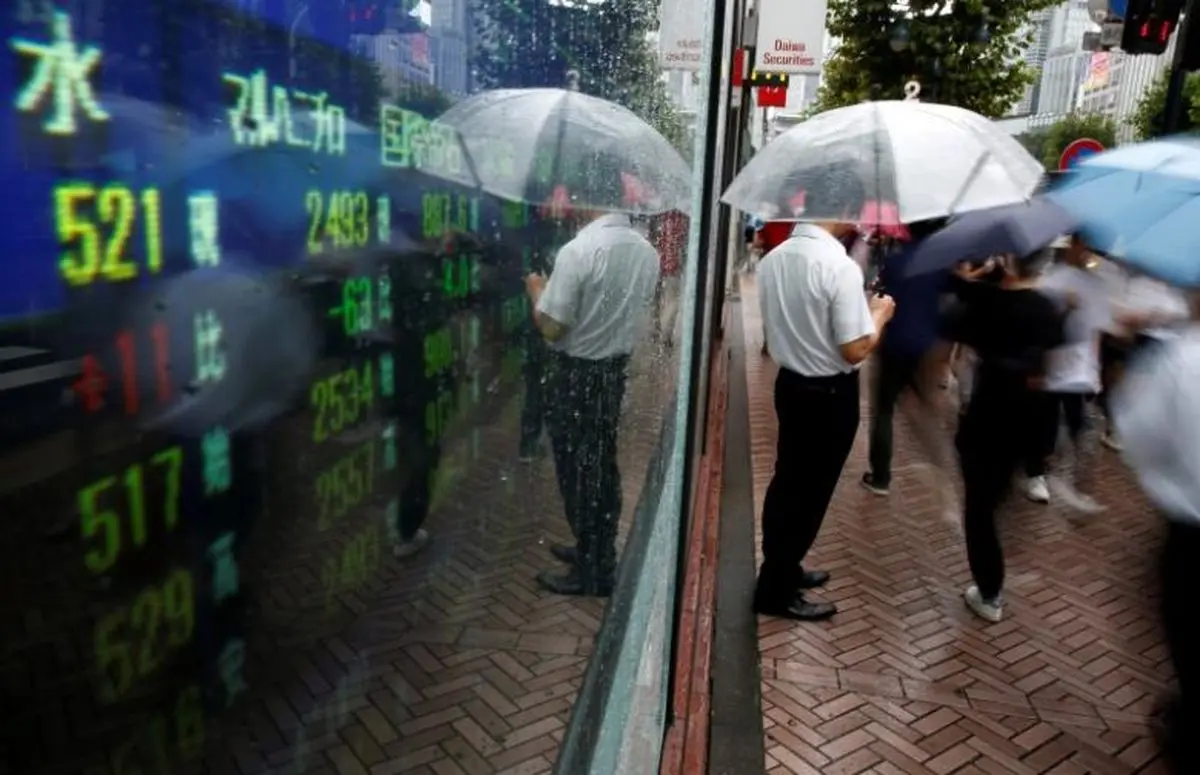Stocks falter as anxiety grows over second coronavirus wave

Asian shares tumbled on Tuesday on growing worries about a second wave of coronavirus infections after the Chinese city where the pandemic originated reported its first new cases since its lockdown was lifted.
European markets were set to open lower with EUROSTOXX 50 futures STXEc1 off 0.52% and FTSE futures FFIc1 down 0.22%. E-Mini futures ESc1 for the S&P 500 slipped 0.68%.
The central Chinese city of Wuhan reported five new cases on Monday, casting doubts over efforts to lower coronavirus-related restrictions across the country as businesses restart and individuals went back to work.
“Markets have been torn between optimism on the tentative re-opening of some economies and caution on the still grim economic data,” said OCBC Investment Research in a Tuesday market note.
“Any recovery in equity markets is likely to be fragile for now, as markets will watch for cracks in the financial system and elsewhere in the economy as virus infections climb.”
MSCI’s broadest index of Asia Pacific shares outside of Japan .MIAPJ0000PUS stumbled more than 1%, snapping two straight sessions of gains.
Hong Kong's Hang Seng index was among the hardest hit .HSI, down 1.78% followed closely by Australia , off 1.24%. South Korea's KOSPI .KS11 faltered 0.85%.
China's blue-chip CSI300 index .CSI300 was off 0.5% after the country's factory prices fell at the sharpest rate in four years in April, worse than analysts' expectations.
As countries around the world gradually ease restrictions in an effort to restart their economies, investors are becoming anxious about a second wave of infections.
Germany’s Robert Koch Institute reported that the “reproduction rate” - the number of people each person infected with the coronavirus goes on to infect - had risen to 1.1. Any rate above 1 means the virus is spreading exponentially.
The worrisome news follows a fresh outbreak in night clubs in South Korea and record number of new cases in a day in Russia.
“The re-opening of the global economy will likely follow the shape of activity in China. Businesses there have restarted operations but are not necessarily at capacity,” Bob Baur, Chief Global Economist at Principal Global Investors.
“While businesses have mostly restarted, China’s households stay cautious. Restaurants are open, but seats are empty. Vehicle sales bounced off the bottom but are well below normal. Households in the U.S. and Europe will surely mirror this wary attitude even as activity picks up.”
Fund managers expect equity markets to stay the course through June and avoid retesting March lows given the massive monetary stimulus provided by the U.S. Federal Reserve and other major central banks.
Late on Monday, the Fed said it would start purchasing shares of exchange-traded funds that invest in bonds, one of several tools to improve market functioning in the wake of the coronavirus pandemic.
Markets are also keeping a wary eye on China’s trade relations with the United States as well as Australia.
U.S. President Donald Trump said on Monday he opposed renegotiating the U.S.-China “Phase 1” trade deal while Australian media reported that China has suspended imports from four abattoirs in an escalation of tensions.
The Australian and New Zealand dollars slipped on Tuesday as risk sentiment was knocked and in part due to new Chinese restrictions on Australian beef exports.
On the policy front, investors will be looking to comments from Fed officials. James Bullard and Patrick Harker are due to make remarks at 1300 GMT and 1400 GMT, respectively, ahead of a highly anticipated speech from chairman Jerome Powell on Wednesday.
The euro EUR= slipped below $1.08 for the first time in almost a week and the Japanese yen nursed an overnight loss of about 1% to sit at 107.39 per dollar, the bottom end of a range it has kept since mid April.
In commodity markets, oil prices climbed following an unexpected commitment from Saudi Arabia to deepen production cuts in June.
Brent crude LCOc1 futures climbed to a high of $30.11 a barrel and were up 0.2%, or 6 cents, at $29.69 at 0447 GMT, reversing some of the previous session’s losses. The benchmark fell $1.34 on Monday.
U.S. West Texas Intermediate (WTI) crude CLc1 futures were up 0.91%, or 23 cents, at $24.37 after touching a high of $24.77.
END
